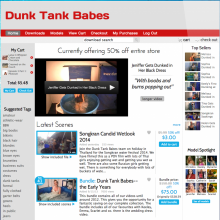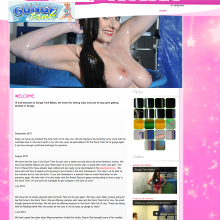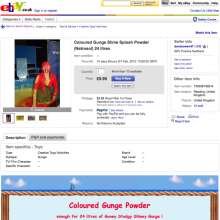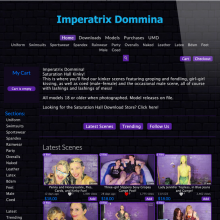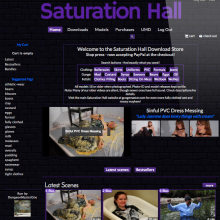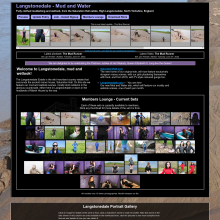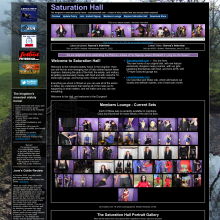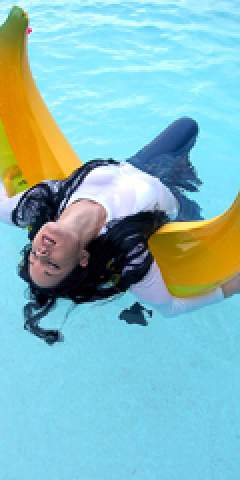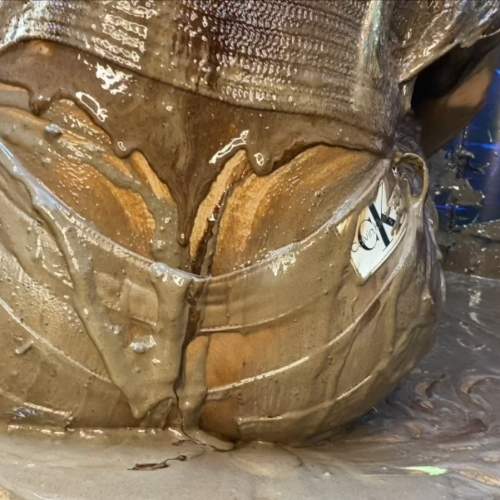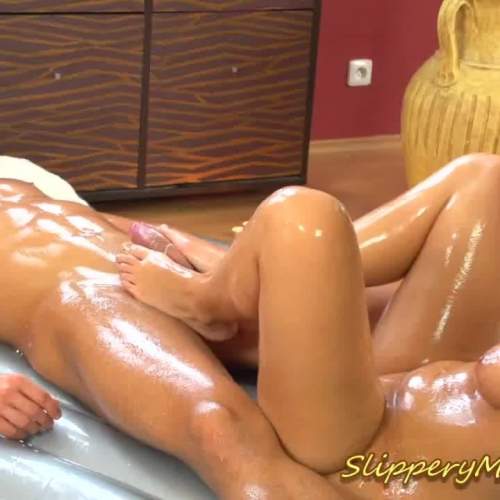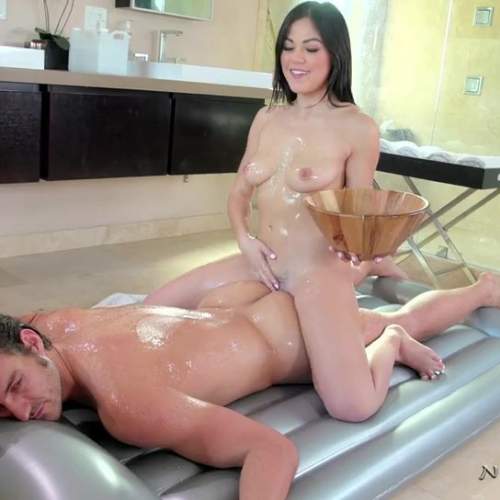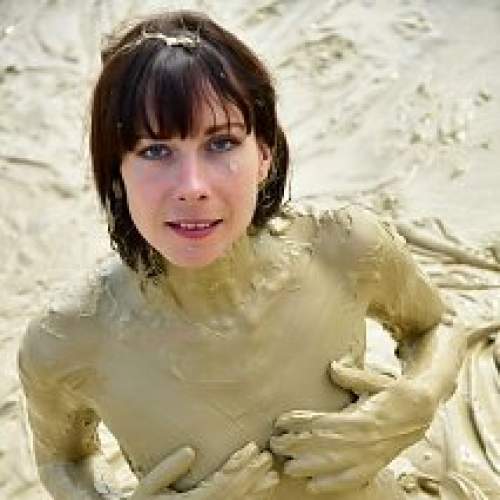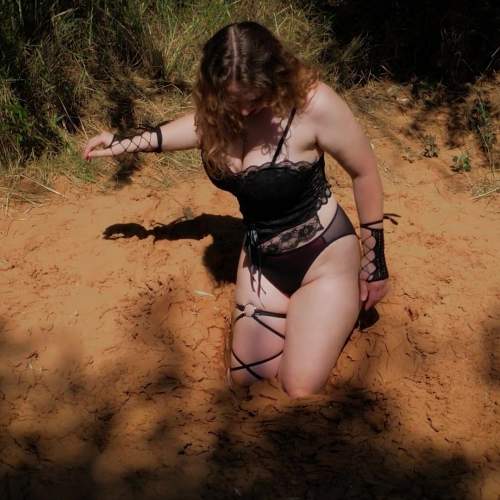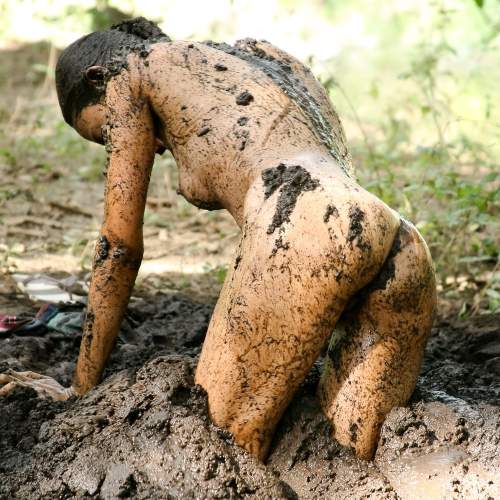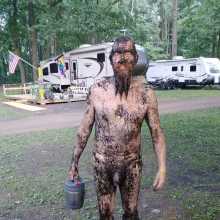|
|
|||
| forums: groups: | |||
|
"Scene Writing, How to Get Ideas?"
BarryMcCockiner2 said: This isn't WAM related but I have like four different folders on my phone with ideas for books/movies/tv shows that I'll probably never write.
Yeah, I'm similar: I have loads of drafts for short stories and comics (not WAM related). The ideas come from various places. E.g. I might be watching a TV show, and I'll speculate about what's going to happen next. How will they resolve the cliffhanger at the end of the episode? Sometimes I'm right, sometimes I'm wrong, and sometimes I think that my idea was better than what they come up with

In the context of a WAM video, I think there are 3 categories:
* Scripted (e.g. most of what SlapstickStuff does).
* Plotted but not scripted. E.g. "These two women both fancy the same man, and they start arguing about who saw him first, then it turns into a tit for tat food fight". It's then up to the models to improvise their own dialogue and actions.
* Not plotted, e.g. gameshows. This is where there's a scenario, but then the models are behaving as themselves, with their own personalities, rather than being "in character".
So, picking one of them is a good place to start.
There will then be other restrictions, such as the number of people and the place where you're filming. If hope (OP) will be the only person involved, that eliminates various scenarios (unless you do split screen). You'll either be talking to yourself or talking to a person who's off-camera (e.g. on a phone). Similarly, if you say that you want the scene to take place at the Olympic games, it will look a bit weird with your kitchen in the background. You could do green screen effects for that, although it tends to look a bit weird when the mess is effectively hovering in mid-air.
Also, do you feel the need to justify where the mess is coming from? In a gameshow scenario, that's all the explanation you need. In a story scenario, do you want to set the scene in a bakery, or are you happy to say "I'm standing in line at the bank and I'll help myself to this trolley full of pies"?
flank said:
This weekend I did some that ended up being for practice with the cameraman / video editing guy (who's also into this) as the second person and intentionally visible with his own set of lines. He was also the one who manned the pies and buckets. The background was just a white sheet, gotta walk before you can run!
I never did stick exactly to what I wrote because sometimes saying something a bit different felt more natural. Everything was story scenario type, most of my dialog at the beginning and his more spread out. I came up with a version of the higher / lower game that can be played with a host as a fake game show, at home I just explain the rules and go at it. That's what I'll probably practice with this weekend since I'm unable to find anyone I know to come over and make a mess out of me. Seems like an odd problem to have but here I am.
There will then be other restrictions, such as the number of people and the place where you're filming. If hope (OP) will be the only person involved, that eliminates various scenarios (unless you do split screen). You'll either be talking to yourself or talking to a person who's off-camera (e.g. on a phone). Similarly, if you say that you want the scene to take place at the Olympic games, it will look a bit weird with your kitchen in the background. You could do green screen effects for that, although it tends to look a bit weird when the mess is effectively hovering in mid-air.
Also, do you feel the need to justify where the mess is coming from? In a gameshow scenario, that's all the explanation you need. In a story scenario, do you want to set the scene in a bakery, or are you happy to say "I'm standing in line at the bank and I'll help myself to this trolley full of pies"?
Also, do you feel the need to justify where the mess is coming from? In a gameshow scenario, that's all the explanation you need. In a story scenario, do you want to set the scene in a bakery, or are you happy to say "I'm standing in line at the bank and I'll help myself to this trolley full of pies"?
This weekend I did some that ended up being for practice with the cameraman / video editing guy (who's also into this) as the second person and intentionally visible with his own set of lines. He was also the one who manned the pies and buckets. The background was just a white sheet, gotta walk before you can run!
I never did stick exactly to what I wrote because sometimes saying something a bit different felt more natural. Everything was story scenario type, most of my dialog at the beginning and his more spread out. I came up with a version of the higher / lower game that can be played with a host as a fake game show, at home I just explain the rules and go at it. That's what I'll probably practice with this weekend since I'm unable to find anyone I know to come over and make a mess out of me. Seems like an odd problem to have but here I am.
flank said:
Yeah, I'm similar: I have loads of drafts for short stories and comics (not WAM related). The ideas come from various places. E.g. I might be watching a TV show, and I'll speculate about what's going to happen next. How will they resolve the cliffhanger at the end of the episode? Sometimes I'm right, sometimes I'm wrong, and sometimes I think that my idea was better than what they come up with
In the context of a WAM video, I think there are 3 categories:
* Scripted (e.g. most of what SlapstickStuff does).
* Plotted but not scripted. E.g. "These two women both fancy the same man, and they start arguing about who saw him first, then it turns into a tit for tat food fight". It's then up to the models to improvise their own dialogue and actions.
* Not plotted, e.g. gameshows. This is where there's a scenario, but then the models are behaving as themselves, with their own personalities, rather than being "in character".
So, picking one of them is a good place to start.
There will then be other restrictions, such as the number of people and the place where you're filming. If hope (OP) will be the only person involved, that eliminates various scenarios (unless you do split screen). You'll either be talking to yourself or talking to a person who's off-camera (e.g. on a phone). Similarly, if you say that you want the scene to take place at the Olympic games, it will look a bit weird with your kitchen in the background. You could do green screen effects for that, although it tends to look a bit weird when the mess is effectively hovering in mid-air.
Also, do you feel the need to justify where the mess is coming from? In a gameshow scenario, that's all the explanation you need. In a story scenario, do you want to set the scene in a bakery, or are you happy to say "I'm standing in line at the bank and I'll help myself to this trolley full of pies"?
BarryMcCockiner2 said: This isn't WAM related but I have like four different folders on my phone with ideas for books/movies/tv shows that I'll probably never write.
Yeah, I'm similar: I have loads of drafts for short stories and comics (not WAM related). The ideas come from various places. E.g. I might be watching a TV show, and I'll speculate about what's going to happen next. How will they resolve the cliffhanger at the end of the episode? Sometimes I'm right, sometimes I'm wrong, and sometimes I think that my idea was better than what they come up with

In the context of a WAM video, I think there are 3 categories:
* Scripted (e.g. most of what SlapstickStuff does).
* Plotted but not scripted. E.g. "These two women both fancy the same man, and they start arguing about who saw him first, then it turns into a tit for tat food fight". It's then up to the models to improvise their own dialogue and actions.
* Not plotted, e.g. gameshows. This is where there's a scenario, but then the models are behaving as themselves, with their own personalities, rather than being "in character".
So, picking one of them is a good place to start.
There will then be other restrictions, such as the number of people and the place where you're filming. If hope (OP) will be the only person involved, that eliminates various scenarios (unless you do split screen). You'll either be talking to yourself or talking to a person who's off-camera (e.g. on a phone). Similarly, if you say that you want the scene to take place at the Olympic games, it will look a bit weird with your kitchen in the background. You could do green screen effects for that, although it tends to look a bit weird when the mess is effectively hovering in mid-air.
Also, do you feel the need to justify where the mess is coming from? In a gameshow scenario, that's all the explanation you need. In a story scenario, do you want to set the scene in a bakery, or are you happy to say "I'm standing in line at the bank and I'll help myself to this trolley full of pies"?
My problem has always been with scripting. Whether it's some sort of horror movie or a scene involving a 2014-themed bridal shower where half the people there have long chevron dresses on, I can't tell you what's going to happen over the course of that. What I can tell you is that scary stuff will happen or a food fight will happen and that every single one of those dresses will wind up covered in stuff.
Heck, I'm currently in the planning stage of an erotic story compilation themed around sundresses. The length of the dress will get longer with each story, with the last story being one that I wrote for my girlfriend for her birthday, but I can't tell you literally anything else that will happen.
To me when getting a scene going maybe work from the end to the beginning. Find out where you want to end up. That way you know who will end up messy and who if anyone will stay clean. How do they get messy, is it a tit for tat fight, is it something that was planned and something they wanted to do, is it an ambush, is it a game etc. Then the setup to introduce things small talk etc.
Sometimes its more about the model being able to go with the flow and ad lib to create a great scene. Some of our best scenes have had a vague story line and we have just gone with the flow. If you have 2 girls or a girl and presenter who can bounce off each other it seems more natural than a heavily scripted scene.
www.gungetankbabes.com
Saturation Hall, Langstonedale
Lord of the Pies
We mostly bounce everything off our existing back-story. We've a stately home with a family tradition of messy fun going back centuries, established characters who love getting messy for a variety of reasons, and several storylines involving clothes testing for handling in messy conditions.
I agree with GungeTankBabes, it's usually best not to over-script things, just lay out a general concept and then let the models run with it. My people all know what the most important things I regard as must-see in scene are, so they know to include those and otherwise just make it up as they go. Makes for much more flowing (pardon the pun) scenes than when I used to micro-manage almost every action with constant stop-start of the camera.
I agree with GungeTankBabes, it's usually best not to over-script things, just lay out a general concept and then let the models run with it. My people all know what the most important things I regard as must-see in scene are, so they know to include those and otherwise just make it up as they go. Makes for much more flowing (pardon the pun) scenes than when I used to micro-manage almost every action with constant stop-start of the camera.
Saturation Hall - Forth! The Gungemaidens!
Makes for much more flowing (pardon the pun) scenes than when I used to micro-manage almost every action with constant stop-start of the camera.
We try and make a scene flow as one as much as possible without stop starting the camera. I think it kinda adds to it when a model is constantly dunked and the "viewer" can see there is no let up with them having to clamber back up on the tank.
www.gungetankbabes.com
Sponsors
To avoid content being blocked due to your local laws, please verify your age ?
Sponsors

Design & Code ©1998-2025 Loverbuns, LLC 18 U.S.C. 2257 Record-Keeping Requirements Compliance Statement
Epoch Billing Support Log In





 Love you, too
Love you, too
